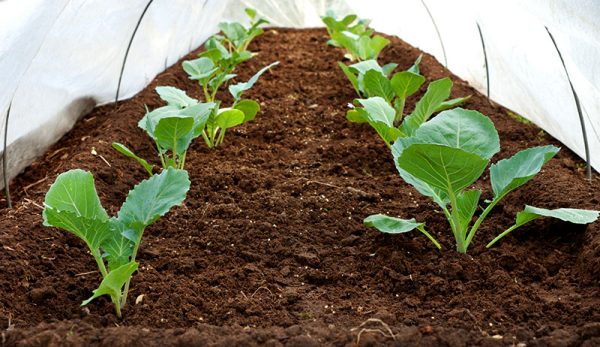
Winter means different things to different people depending on geographic region. Cold weather and harsh conditions might last only a few months in the South, or they could cover more than half the year in the Upper Midwest and North. That said, people grow food year-round in every climate, and so can you. Welcome to winter crops.
With a little bit of solid frost or snow protection—a high tunnel or greenhouse, but perhaps just a low tunnel or row cover—there are a number of good crops that can grow all winter long. (For more extensive tips on winter crops and cold-weather growing, check out Eliot Coleman’s Winter Harvest Handbook [2009] or Andrew Medford’s The Greenhouse and Hoophouse Grower’s Handbook [2017].)
Here are six winter crops you can grow and sell.
1. Lettuce
A surprisingly hardy crop, lettuce can be a very productive and crispy treat in the winter. I recommend finding varieties with a fair amount of cold tolerance, but if you do a succession of plantings under cover, you can easily keep lettuce around until spring. Consider growing the “cut and come again” leaf varieties among your winter crops such as Salanova for multiple harvests throughout the winter.
2. Kale
Some very hardy kale varieties exist, and I recommend trying them all. This is a winter crop you can plant in late summer or early fall and pick from all the way through the cold-weather months under the right conditions.
3. Brussels Sprouts
Brussels sprouts are a very long season crop, so it is important that you start them early. However, if you happen to start them later in the summer or early fall, that just means you might be having Brussels sprouts in March or April, which isn’t the worst thing in the world. Again, for winter crops, look for the hardiest varieties and consider asking local growers which ones do well in your region to ensure the most success. Brussels sprouts need cover in the coldest spells but they are probably the hardiest crop on this list.
4. Collards
A cousin of kale, this hardy green is a really tough crop and sweetens with a little cold. If you can keep it covered through the winter, you can eat fresh collards all the way until spring. Collards are a great market item and nice to have around for soups and hashes or as a side.
5. Mache
Among the hardiest of salad greens, mache, or vit, is a superb option among winter crops. In fact, this winter green doesn’t even like to be planted until the soil cools down to around 50 or 60 degrees Fahrenheit. Then, it will survive many freezes with minimal coverage. Nothing quite compares to the flavor of mache, either—it is a fresh and tender green capable of going on top of or beside just about any entree.
6. Mustard Greens
Though perhaps not as cold-tolerant as some of the above, red and green mustards, along with mizuna and others, can make for excellent options among winter crops under a little protection. In fact, some growers mix mustards and kales together with lettuce for a mesclun mix, which can be a nice, spicy treat for the winter—one from which you can get multiple harvests.




